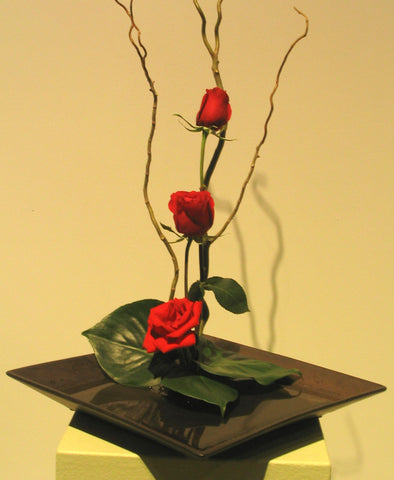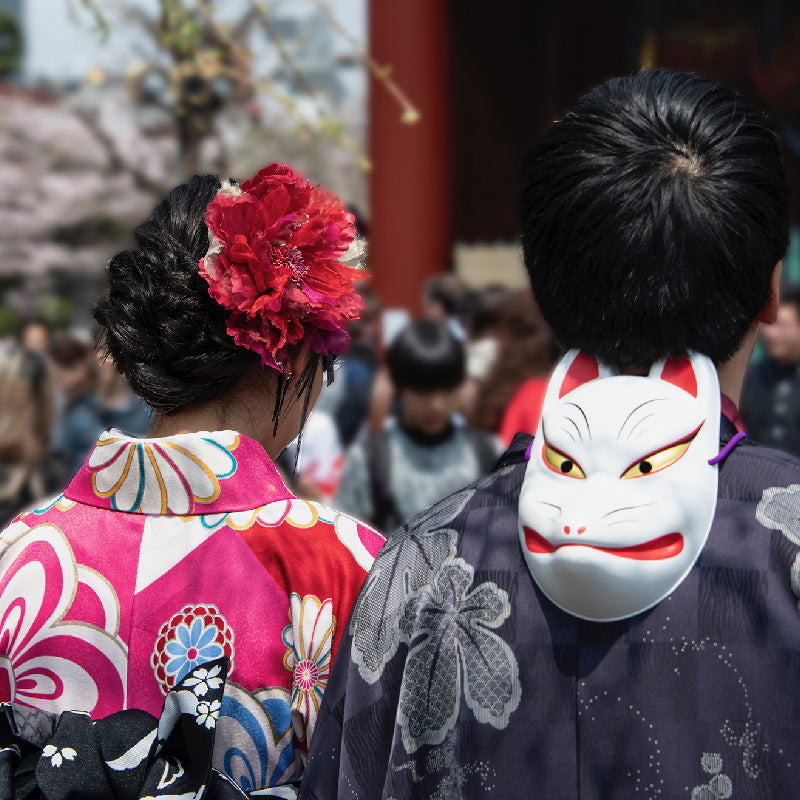Traditional Japanese Art
Art is everywhere. We can contemplate drops of water sliding on a window or a fire in a chimney for hours. Art is in every element that surrounds us. This feeling is enhanced in Japan.
Traditional Japanese art is deeply rooted in Japanese culture and reflects the country's unique history and traditions.
From prehistoric times, when pottery was the main art, to the Edo period that saw the emergence of ukiyo-e woodblock prints, art in Japan has evolved by keeping the same dedication and attention to details
During the Asuka period (538-710), the Buddhism, originated from China and Korea, crossed the ocean and marked profoundly traditional Japanese art. For instance, ikebana (flower arrangement) and tea ceremony reflect perfectly the precepts of Zen Buddhism : it cultivates mindfulness and appreciation for the beauty of the natural world.
This is during the Heian period (794-1185) that most of the iconic traditional Japanese art, such as calligraphy, painting and sculpture, thrived.
Other Japanese art forms, such as kabuki theater and Noh drama, are beloved forms of entertainment that have been passed down through the generations.
Japanese ceramics, lacquerware, and textiles are also highly prized for their beauty and craftsmanship.
Art can take many forms. You just have to open your eyes to appreciate the beautifulness of Japan.
Below are the most iconic traditional Japanese arts that are known worldwide.
- Calligraphy

Calligraphy is a subtle and elegant blend of written art and communication. The earliest examples of Japanese calligraphy date back to the 6th century, when Chinese characters were first introduced into Japan.
It was during the Heian period (794-1185), that calligraphy evolved artistically, with the introduction of new writing styles and techniques. It was not until the time of Muromachi (1336-1573) that calligraphy became an art in its own right.
2. Kimono - The traditional Japanese garment

The word kimono is composed of 着る, kiru (“to carry on oneself”) and of 物, mono (“thing”), literally “thing that one carries on oneself”. Its predecessor, the Kosode, was a short sleeves garment used when Japan was still under the influence of China in the 7th century. A kimono is a long, loose-fitting robe with wide sleeves, worn by men and women. It has been popularized abroad by the image of the Geisha, known for her elegance. Kimonos are often made of silk. The patterns and colors on the fabric are carefully chosen to reflect the season and occasion like weddings, festivals, and tea ceremonies.
3. Japanese Tea Ceremony - The art of making and serving tea

The Japanese tea ceremony, or "chado," is a cultural practice that has been passed down for generations. It is a moment out of time, that involves the preparation and serving of green tea, called "matcha". The ceremony emphasizes simplicity, harmony, and respect, and each step is slowly performed with care and attention to detail.
4. Ikebana - The art of flower arrangement

Ikebana, or "kado," is the Japanese art of flower arrangement. It is practiced as a way to find peace and harmony.
It involves the careful selection and placement of flowers and other natural ornamentation in a way that expresses the beauty of nature and the changing seasons.
5. Kabuki - The traditional Japanese theatre

Kabuki is a form of traditional Japanese theatre that originated in the 17th century. It is known for its elaborated masks, costumes, and dramatic performances. The stories are historical or mythical. The actors use magnified movements and gestures to convey emotions and tell the story.
Traditional Japanese art is known for its simplicity, elegance, and attention to detail. You can find all these characteristics in the collections of artistic items we propose, and surely find a piece of art to bring an authentic Japanese touch to your interior.

